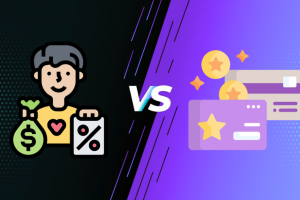Instagram AI has completely changed the interaction between users and the content presented, and this is done by using advanced algorithms to customize each user’s feed. Using huge data such as likes, comments, and shares, and even the time people spend viewing posts, the AI system employed by Instagram adjusts the content according to the user’s preferences, so that the user sees posts from the accounts he interacts with the most. This advanced method not only makes users more satisfied but also increases their stay in the application.

Besides, Instagram AI is not merely about content curation, it anticipates future interactions using past behavior. An example would be when a user keeps pausing the scroll to view videos or takes longer to look at the specific kind of photos then the algorithm will learn the pattern and alter the feed. This dynamic adaptation enables a more interactive and pleasurable experience and makes Instagram a customized social media network where one can find content corresponding to his or her interests.
This is why it feels like Instagram is 100% customized just for you. It’s almost like it knows you better than yourself.
The Basics of Instagram’s Feed and Its AI
Instagram isn’t simply showing you Posts in the order they see them. There is more than one thing going on every time you press refresh. It shows you things that the smart technology behind the Instagram AI has algorithmically determined, which should likely catch your eye and order them into the news feed. Each time you search their site, the model is like a personal assistant for sorting the millions of posts for you.
How Instagram Decides What You See
When designing your news feed, Instagram uses a history of your habits and its predictions for what you will want to see. Instagram is not leaving anything to chance. Here is the rundown on what Instagram uses to build your feed:
Your Interactions
As a general rule of thumb, the more you “like”, “comment”, “share”, or save someone’s post, the more frequently you will see their updates appear at the top of your feed. Instagram tracks every touch and swipe.
Content Type
If you keep watching dog videos or liking travel photos, be prepared to see more of that type of content. The feed uses information from your actions and shows you similar content.
Post Timing
While Instagram doesn’t use chronological feed anymore, new content is weighted more strongly. Therefore, if it is relatively recent and aligns with your interests, it is more likely to show at the beginning.
Your Connections
The Instagram feed prioritizes content from people and brands you connect with the most. The more you connect with someone, the closer they are to the front of your feed, while others may remain further to the back.
Time Spent
If you observe a photo and simply scroll by, that counts as an indicator. The feed works based on what you give attention to, as well as what you decide to scroll past.
Instagram knows it builds up a likeness of your preferences over time. Therefore, the more you action on the app, the more accurate it can do so.
A Quick Look at The AI Technology Behind the Scenes
The logic of Instagram AI works as an invisible editor curating a collection of photos, sifting through to find the content you will like. Technology continues to learn about your preferences based on everything you do, but how exactly does it work?
Machine Learning Approaches
Instagram’s feed is based on models of machine learning. These are computer programs that review millions of interactions to identify trends. The algorithms note all types of patterns about your choices, such as which accounts are visited most often, how long specific videos are ultimately watched, and what types of content maintain your attention.
Ranking Algorithms
Every post is assigned a score. The algorithm looks at your past behavior, compares that to what’s present in your feed, and stacks them in order, with the highest-scoring posts up top. The algorithm is personalizing your feed in real time. Your feed updates while you’re using the app. It’s not fixed. When you open Instagram at lunch versus before bed, you can be sure the algorithm has reordered things based on your most recent activity. Signals for Instagram AI leverages hundreds of signals, including:
- Who posted it?
- When posted.
- Post popularity
- Your past interactions with the creator
The Device You’re On
The AI in the feed is always running in the background, testing new things and adjusting slightly. The feed is designed to hold your attention, and in this way, the algorithm is always getting to know you each time you like something or scroll through to the next post.
How AI on Instagram learns your interests, Instagram does not simply use math to personalize your feed. The algorithm quietly studies how you interact with the app. It pays attention to everything you tap, scroll, and pause on. The algorithm behind your feed is curious, much like a friend – it’s learning what you pay attention to, and it’s changing the next time you scroll. The app tries to make your experience personal, and it does this when it considers every interaction you create when using Instagram.
Tracking Your Interactions: Likes, Comments, And Time Spent
Instagram does not just observe who you are following; it studies everything, including double tapping a photo and spending three seconds watching a reel. These moments, no matter how rapid, guide the AI in determining what to display in your feed. Your likes, comments, shares, and even the things you scroll by become part of your digital identity.
Here is how Instagram interprets those signals:
Likes
When you click the heart on a post, that is a bright green light to Instagram AI. It knows you said, “Show me more of this,” loud and clear.
Comments
Comments tell the system you care more about that content. So, whether you leave a smiley face or a full-blown review, each word instructs them about your interests.
Time Spent
Sometimes, you don’t interact at all, but the fact that you slowed to pause over a video is still valuable. The longer the pause, the stronger the signal that type of content had interest in.
Shares and Saves
Shares and saves are just like a gold star. They move the mark and tell Instagram that type of content is worth saving for you, too. The app records all of these activities, giving the system a larger, more comprehensive image of the feed that you want. If you continue to watch videos of cake decorating or send your friends funny meme texts, Instagram will remember.
Understanding Signals: What Counts Most to The Algorithm
The important thing to remember is that not every action is equally weighted when it comes to your feed. Instagram AI weighs your interactions on a scale of importance. Some signals are more important than others and play a fundamental role in algorithms. Let’s unpack which signals carry the most weight:
Your Engagement
As you engage with posts (by liking, commenting, resetting, etc.), you signal to Instagram what you prefer at the top of the list.
If you engage with particular accounts more, the posts from those will surface first.
Relationships
The accounts that you message, tag, or interact with more frequently are called your “inner circle.” Instagram will show you content from your friends, family, or creators from your “inner circle” first.
Post Features
The type of content matters. If you view a ton of short videos or Stories, Instagram AI will prioritize showing you more of that content.
Being consistent matters, too. If you view a lot of dog posts and are often back at the monthly post solution tool, and when you’re back, from indication that you expect more content than before.
Recency
While you’re interested in the content, Instagram also recognizes that recency is essential. Recently posted content that matches your interests is prioritized so that you won’t miss it while it is new.
Passive Signals
If you pause on a caption or a short clip to read it, that’s a silent signal. Even if you don’t interact with it, Instagram is still logging your interaction.
To summarize, Instagram’s algorithm functions like a scale, i.e., the more interactions added, the heavier it gets, causing some content to float to the top of your feed and sinking others to the back of your feed. Your feed will become more tuned to your taste because the AI is always logging your actions, big and small. It’s useful to be aware of your habits in the app.
There are a few accented measures you can take with your general interaction on the app to increase the likelihood of more of that content showing up in your feed. If you see something you like, just put a little like or comment, and the AI can guide you in the right direction faster than you would believe.
Personalization In Action: How Your Feed Changes Over Time
Your Instagram experience is not static. If you scroll through your feed consistently each day, keep in mind that as you revise the images, Instagram is always designing and making adjustments to what you see.
The changes are not immediately apparent on the surface; it can easily mean that your feed today can look markedly different than what you could have imagined 30 days ago.
Every click of interest- like, saving, viewing, ignoring- is a new signal; it’s like a small tip to Instagram AI that shuffles around the content you see and collaborates to understand what is most relevant to your next interests.
As your interests change, your feed continues to change- giving you more of your interests. Yet not exactly perfect, sometimes you are getting way too much content in the same area of interest, or you are getting some hits and misses in the posts. This is the way it works.
Getting More of What You Want (And Sometimes Don’t)
The amount of time you spend using Instagram is usually proportional to the AI’s effectiveness when it comes to making suggestions for you. If you are saving and/or watching workout videos on your account, after a while, you will understand that you will very likely start seeing more of the same content in your feed. From a theoretical standpoint, it is really like having a personal shopping assistant who always wants to find things that are parallel to your interests.
The AI is quick at picking up your style, interests, and pattern of consumption:
- Consistent Interests Changing Interests: If you start to be bored with travel pictures and begin to enjoy tech more, your feed will pick up those likes and serve you suggestions based on that interest area. The more you (like, share, or view) a new interest area, the faster you will see new recommendations that are more aligned with those interest areas.
- New Creators: If you start to follow new creators or like new pages, you will immediately get new content in your feed. Instagram wants to keep things fresh, and, unfortunately, if you engage with their content in any way, they will often multiply that interest with a larger number of new individuals to followers.
What is fascinating is that sometimes, it can work too well. If a certain niche is represented too much, it may also feel like it is repeating itself. In the same way, your friend’s restaurant suggestion goes unchanging each time you go out together, just because they once went there. This could be helpful if you are obsessed with your new subject matter, but it could also be too much at that point in time.
Dealing With Repetitive or Irrelevant Posts
For all of Instagram AI speed of learning, it is often not very accurate. You may see several repeated posts in the same formatting, or altogether unrelated content. Why could this happen?
- Echo misfire: Every time you engage with a type of post, it is like turning the dial to that suggestion one clicks to the right. Soon enough, like Instagram’s added suggestion, your feed will be predicting a similar set of content.
- Old dogs don’t die: Perhaps at one time you went through a large fitness reels phase and have now moved away from this. However, if you have not issued enough new signals, old signals can take longer to die.
- Random Outliers: Occasionally, the algorithm will surface posts that it thinks you will have an interest in based on connections or items that your friends follow. This may sometimes include items that might feel a little out of place from a typical feed.
But you’re not stuck with these. If you find yourself skipping over, muting, or clicking ‘not interested’ on posts, Instagram will start adjusting quickly. Think of it like turning on the radio – if you hear a song that isn’t your jam, switching stations will help to clue the app into what you enjoy.
Here are a few quick things you can do to influence your feed:
- Mute accounts or hide posts that you are sick of seeing in your feed.
- Press ‘not interested’ on anything you hate.
- Share a wider variety of engagements to indicate to the algorithm that your tastes are changing.
Your feed evolves as quickly as you do. If you give Instagram signals that your favorite things or want something new, it responds like any good feedback cycle. It is just trying to find that sweet spot between what you love/enjoy today and what it thinks might grab your attention tomorrow.
The Big Debate: Privacy, Transparency, And Control
Instagram’s many AI tools are aimed at creating a personal feed for you. However, with personalized content, you give up something in return – your privacy. Many users question, “How much does Instagram know about me?” “What goes on behind the scenes?” and “How much control do I have?” If you’ve ever questioned how these recommendations feel personally, you’re certainly not the only one. Let’s put any misconceptions regarding the information that the AI collects on YOU, and how YOU can manage your experience, to rest.
How Much Does Instagram AI Know About You?
The AI is building a thorough profile on you thanks to every tap, like, pause… It may feel like it’s reading your brain, but what it’s doing is learning the manner in which you digitally interact.
Instagram tracks:
- Which posts you interact with (likes, comments, shares, and saves)
- Individuals you type a direct message or search for the most.
- Which stories and reels do you pause to watch
- Individuals you mute or hide.
- Which content do you skip, or scroll past quickly?
- Links you click in profiles.
- Hashtags and topics you look into
All of this data will be compiled, processed, accessed, and utilized to predict types of content that Instagram thinks will be engaging to you. If you spend additional time on food reels or if you always watch makeup tutorials, Instagram is keeping that secret information as part of an invisible profile card. The system always wants as much new activity as possible, so it reminds you not just of what you like now, but what you likely liked a month ago, a year ago!
The tradeoff for this custom experience? Well, it’s a pretty significant look into your habits! Instagram may not know what you had for breakfast, but it does know what types of posts keep you scrolling and what creators you check in on most. The way your feed reflects you can feel disconcerting.
Consider this: your feed is a digital reflection, displaying things back to you that you’re the most likely to stare at. According to Instagram, the data it collects is used to personalize your experience and keep the platform secure. Although this does not preclude you from thinking about how many aspects you are giving up for what potentially feels like a personalized feed.
Tips To Manage and Take Back Control of Your Feed
You do not have to accept whatever Instagram presents to you. The Instagram algorithm tries to make predictions about your taste, but there are many ways of pulling things back and taking more control of what your feed looks like. Moderating your Instagram feed starts with registering new signals or taking away what you do not want to see.
Here are some actionable tips for moderating your feed:
Use the Not Interested Option
You stumbled across a random post in the suggested feed that you did not like? Tap the three dots and select Not Interested. This tells Instagram that it should show you less of that kind of content.
Use Mute or Unfollow
If someone is overwhelming your feed with their posts, use the mute feature so their content will not appear, or just unfollow them. You control who stays in your main view.
Add Favorites
Instagram gives you the option to create a favorites list. Posts from favorites will appear first in your feed. This way, you will never miss updates from those friends and favorites that you care for most. Delete Your Search History
Your search and explore history provide the algorithm with a lot of information. Each time you clear your search and explore history, you are also clearing out the old signals that may not reflect your current preferences.
Engagement
Like, comment, and view different kinds of posts to provide the algorithm with a variety of signals. The more variety you show, the more your feed will shift and evolve beyond the repetitive topics it currently has.
Check Your Ad Settings
If you check your settings and see what Instagram thinks your interests are, you can remove subject matters that you don’t like to improve your ads or recommended posts.
Limit App Tracking
In your phone settings, you can limit tracking and limit permissions on how your data is collected. This will not change your feed overnight, but at least you are putting some limits back in place.
Taking a few minutes to adjust your settings gives you a little more control back. Even small changes can make your experience with scrolling feel less like a guessing game and more like something that is curated for you, on your terms. If you ever start to feel like your feed knows a little too much, you do have control.
Conclusion
As you can see, Instagram AI is busy doing its job behind the scenes, quietly adjusting your feed every time you swipe, like, or comment. It is clever, of course, but you are still the one in control. Changing your settings and varying your interaction with posts means you can retain a certain level of control over what you see to help you avoid that stale and unwanted feed.
Your habits give the app clues as to what interests you; therefore, don’t be afraid to try something new or cut out what is not working for you. If your feed starts to feel off, explore what we have discussed above to help you get back on track.


